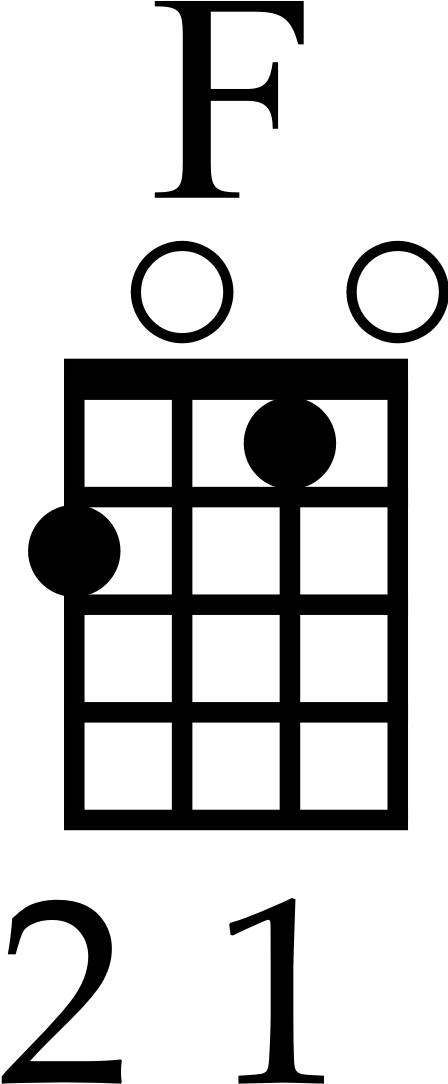Today, let’s jam out and strum this beginner-friendly ukulele chord progression.
Playing with others is one of the best ways to learn how to keep a steady strumming rhythm and stay on track with your chord changes, so I’ll keep a rock-steady strumming rhythm going so you can play along.
In this video, I give you three beginner ukulele chords and a familiar beginner-friendly strumming pattern that we’ll use to jam out and play along together.
Grab your ukulele, tune it up, and let’s begin!
Keep reading to discover the chords and strumming pattern used in this video.
Chords You Need to Know to Play This Jam
There’s just three beginner-friendly chords you need to know to play along with me. These chords are perfect chords to practice at tempo since they are used in many, many songs. After jamming today, you’ll be making these changes smooth and steady.
C Major Chord

To play a C major chord, place the ring finger on the 3rd fret of the bottom A-string and let the top three strings ring open.
F Major Chord

To play an F major chord, place the middle finger on the 2nd fret of the top g-string and the index finger on the 1st fret of the E-string. Let the C-string and bottom A-string ring open.
G Major Chord

To play a G major chord, place the index finger on the 2nd fret of the C-string, ring finger on the 3rd fret of the E-string, and middle finger on the 2nd fret of the bottom A-string. Let the top g-string ring open.
Strumming Pattern You Need to Know to Play This Jam
For our jam, we’ll be playing a beginner-friendly calypso strumming pattern.

This strumming pattern is commonly used in songs with chord changes that occur on the first beat of the measure, and it’s also a popular pattern used in Hawaiian ukulele music, so it’s definitely one you need to learn.
Playing the Chord Progression Together
For this jam, we’re going to keep things nice and simple.
We’re going to repeat a four-bar chord progression. On the first beat of every measure, we will change chords. Make sure you count out loud as you’re first learning how to make these changes.

When you’re ready, queue up the video above and I’ll hold down a steady strumming rhythm so you can play along and practice these changes!

